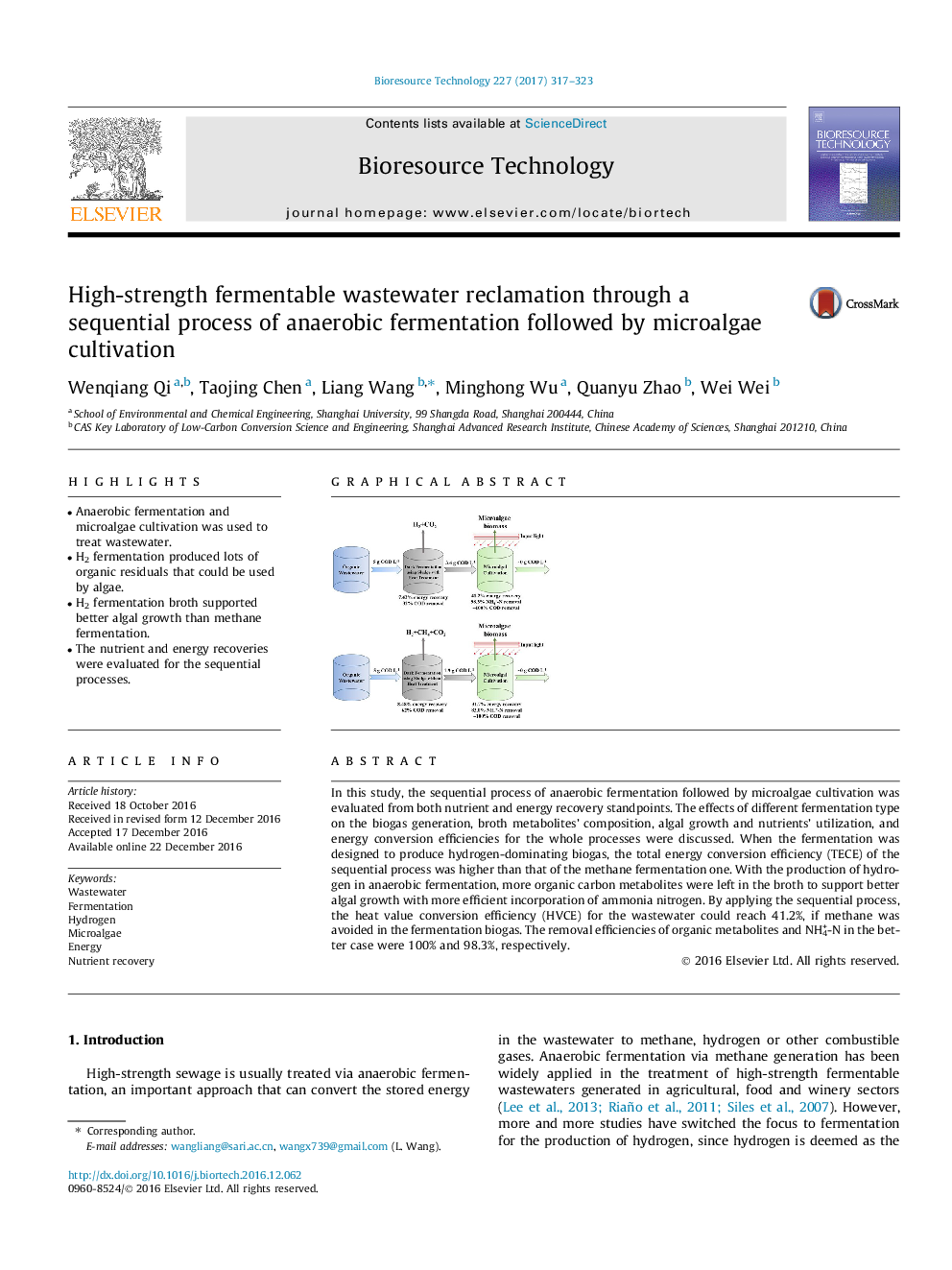| کد مقاله | کد نشریه | سال انتشار | مقاله انگلیسی | نسخه تمام متن |
|---|---|---|---|---|
| 4997682 | 1459916 | 2017 | 7 صفحه PDF | دانلود رایگان |
- Anaerobic fermentation and microalgae cultivation was used to treat wastewater.
- H2 fermentation produced lots of organic residuals that could be used by algae.
- H2 fermentation broth supported better algal growth than methane fermentation.
- The nutrient and energy recoveries were evaluated for the sequential processes.
In this study, the sequential process of anaerobic fermentation followed by microalgae cultivation was evaluated from both nutrient and energy recovery standpoints. The effects of different fermentation type on the biogas generation, broth metabolites' composition, algal growth and nutrients' utilization, and energy conversion efficiencies for the whole processes were discussed. When the fermentation was designed to produce hydrogen-dominating biogas, the total energy conversion efficiency (TECE) of the sequential process was higher than that of the methane fermentation one. With the production of hydrogen in anaerobic fermentation, more organic carbon metabolites were left in the broth to support better algal growth with more efficient incorporation of ammonia nitrogen. By applying the sequential process, the heat value conversion efficiency (HVCE) for the wastewater could reach 41.2%, if methane was avoided in the fermentation biogas. The removal efficiencies of organic metabolites and NH4+-N in the better case were 100% and 98.3%, respectively.
145
Journal: Bioresource Technology - Volume 227, March 2017, Pages 317-323
